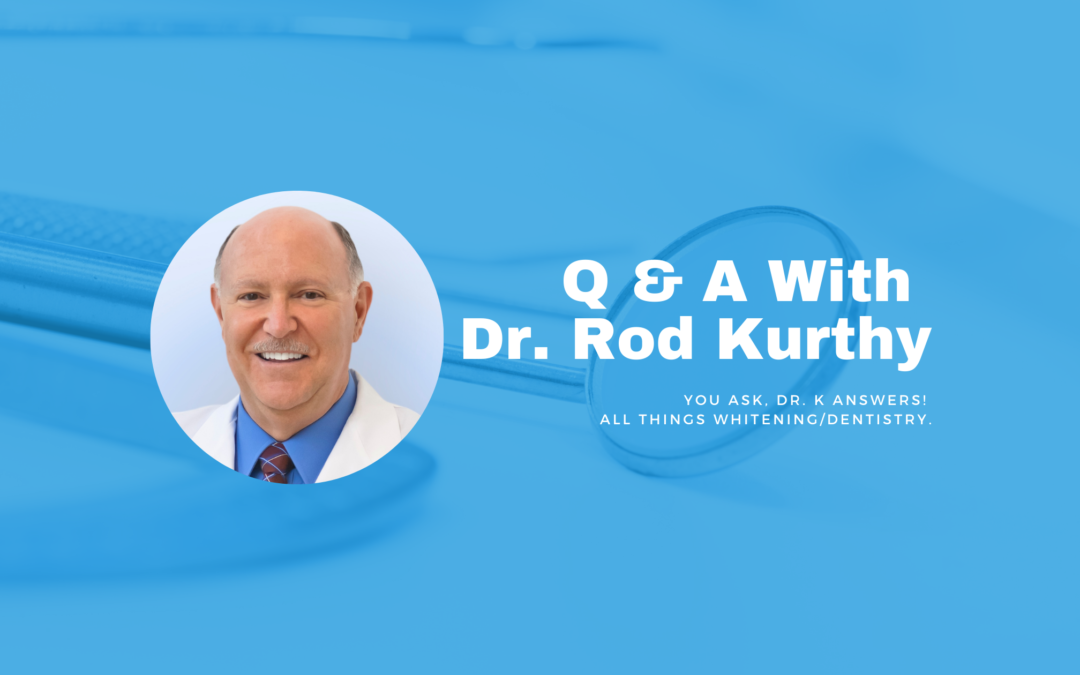Dr. Parker asked, “Is internal bleaching safe?”
Thanks for that great question, Dr. Parker. In fact, it’s a very important question.
Historically – and I mean a significant number of years ago – yes, it was dangerous. I’m sure you’ve heard of dentists talking about internal bleaching being dangerous because it can cause internal resorption. False. When it has caused resorption, it’s been external, not internal.
Below are some facts that you need to understand – which I will tie together at the end:
- Often endodontically treated teeth have patent dentinal tubules without sclerotic or reparative dentin. This means that often those dentinal tubules are pretty much open pipelines from the obturated pulp canal right out to the PDL (periodontal ligament).
- Many are aware that hydrogen peroxide (H2O2) breaks down to molecular oxygen and water. That’s the kindergarten version. Peroxide also, can and does, break down to hydroxyl radicals, perhydroxyl radicals, superoxide radicals, oxygen ions, and hydrogen ions. In fact, perhydroxyl radicals from peroxide are primarily responsible for teeth whitening.
- Consider when you’re doing in-office, high concentration whitening. You use a paint-on gingival barrier to protect the gums from chemical burns. It’s likely that you occasionally see some minor leakage of that barrier, and some white chemical burns of the gums after you remove the paint-on barrier. But burns typically go away within a very short time with no lingering damage.
- The periodontal spaces around the roots of teeth contain mesenchymal cells, often referred to as stem cells. These cells have the ability to change into other types of cells. Commonly they may become blastic or clastic cells. Blast cells grow things such as bone (osteoblasts) or tooth root surface (cementoblasts). Clast cells eat away tissue such as bone (osteoclasts) or tooth root surface (cementoclasts).
When internal bleaching, peroxides are placed inside the root canal chambers of endodontically treated teeth, those peroxides give off all the aggressive radicals I listed above. “In the old days,” those radicals percolated down the root canals between the wall of dentin and the root canal obturation material. As this happened, the radicals from the peroxides traveled through the dentinal tubules and into the PDL space.
When the radicals from the peroxide entered the PDL space, they caused chemical burns of the tissues within the PDL space. These chemical burns stimulated the stem cells to turn into cementoclasts, which then started eating away at the root surface.
Once those cementoclasts form, they keep reproducing and eating away (resorbing) the root structure. That’s external root resorption, which often led to the loss of the tooth.
But that was then…and this is now. Researchers realized the solution was to place a restorative plug of some sort at the bottom of the root canal chamber and into the orifices of the root canals, to seal and prevent peroxide radicals from percolating down the sides of the dentin inside the tooth and ending up in the PDL space. Easier said than done…
They tried many materials, including amalgam, IRM, various cements, glass ionomer, resionomer/compomer and composite. Cutting to the chase, many of the studies prefer some sort of ionomer because they are self-adhesive and go through polymerization expansion (instead of shrinkage), making bonding unnecessary, and routinely creating a very tight seal.
When proper technique is followed, radicals are totally prevented from getting into the PDL space, and the internal bleaching procedure is entirely safe. But again… you gotta do it right!
KöR whitening customers can access our Internal Bleaching Instructions, as well as many other techniques on the KöR customer website (www.korcommunity.com). However, if you’re not a KöR provider and would like the full procedural instructions, just call KöR Whitening at 866.763.7753. Our reps will be happy to email the instructions to you.

Dr. Rod Kurthy


